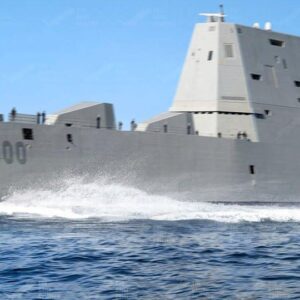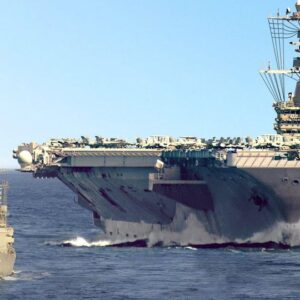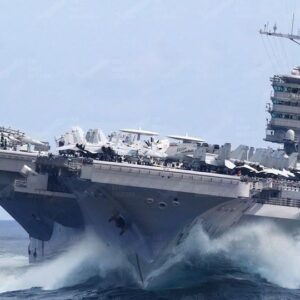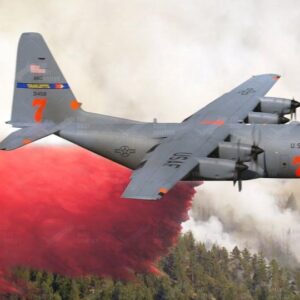The “Shetland Bus” was a covert naval operation during World War II, connecting Shetland, Scotland, with Nazi-occupied Norway.
This operation began in 1941 and continued until the end of the war in 1945.
Its primary purpose was to support the Norwegian resistance movement by carrying out a range of activities including the transport of Norwegian agents, saboteurs, and supplies, as well as the evacuation of refugees.
Initially, the operation used fishing boats, which were common and unassuming, making them less likely to arouse suspicion.
These vessels, however, proved to be vulnerable to German patrols and the harsh conditions of the North Sea.
As a result, from late 1943 onwards, the operation was significantly improved with the introduction of faster and more heavily armed submarine chasers provided by the United States Navy.
These changes substantially increased the effectiveness and safety of the missions.
Origins of the Shetland Bus
The origins of the Shetland Bus operation are deeply rooted in the initial months following the German invasion of Norway in April 1940.
This invasion led to the swift occupation of Norway, forcing the Norwegian government and the royal family into exile and leaving the country under Nazi control.
In response to this occupation, the Norwegian resistance movement began to form, necessitating a secure and effective means of communication and logistical support with the Allied forces, primarily based in the United Kingdom.
The strategic importance of the Shetland Islands, located between Norway and Britain, became apparent early on. The islands offered a relatively close and covert launch point for operations into Nazi-occupied Norway.
The geographical proximity of the Shetlands to the Norwegian coast—about 200 miles at the nearest point—made it possible, although extremely risky, for small vessels to make the crossing.
These vessels needed to be capable of navigating not only the treacherous waters of the North Sea but also evading the vigilant German naval and air patrols that were on constant lookout for Allied activities.
Initially, the operation made use of Norwegian fishing boats.
These boats were chosen for their nondescript appearance and their crews’ adeptness at navigating the challenging seas, often under harsh weather conditions.
These early missions were fraught with danger, undertaken mostly under the cover of night to avoid detection.
The boats were modestly armed, if at all, and relied heavily on stealth and the seafaring skills of their crews to complete their missions.
They transported essential items such as radio equipment, weapons, and ammunition to the Norwegian resistance.
In addition to delivering supplies, these vessels also played a crucial role in evacuating refugees, including Jews and resistance members who were at risk of arrest by the Gestapo, from Norway to the safety of the Shetland Islands.
The operation was initially based at Lunna House, a secluded estate on the Shetland Islands, which served as the first headquarters and operational base for the Shetland Bus.
Lunna House was chosen for its remote location and its accessibility to the sea, making it an ideal point for the clandestine operations.
 Lunna House – the base of operations in the early stages of the Shetland Bus. Image by John Winterbottom CC BY-SA 2.0
Lunna House – the base of operations in the early stages of the Shetland Bus. Image by John Winterbottom CC BY-SA 2.0
The people of Shetland played a significant role in supporting these operations, providing shelter, maintenance support, and even participating in missions.
Despite the bravery and ingenuity of those involved, the operation faced significant challenges in its early days.
The North Sea is one of the most treacherous waters in the world, known for its violent storms and rough seas.
The fishing boats, while sturdy and sea-worthy, were not designed for military operations or to withstand the heavy seas they often encountered.
Furthermore, the constant threat of detection by German patrols meant that every mission carried a high risk of capture or loss.
The early phase of the Shetland Bus was marked by several tragic losses, both in terms of vessels and human lives, underscoring the perilous nature of these missions.
Evolution of the Shetland Bus
The evolution and enhancement of the Shetland Bus operation marked a pivotal phase in its history, transforming it from a daring but perilous initiative into a more sophisticated and formidable instrument of war against Nazi Germany.
This transformation was driven by the necessity to address the significant challenges faced during the operation’s early stages, including the vulnerability of the vessels used and the escalating demands of the Norwegian resistance movement.
The turning point came with the introduction of three American-built submarine chasers in late 1943, a significant upgrade from the fishing boats initially used.
These vessels, provided by the United States Navy, were specifically designed for anti-submarine warfare, making them faster, more durable, and significantly better armed than their predecessors.
Their robust construction allowed them to withstand the harsh North Sea conditions more effectively, while their enhanced speed and maneuverability increased their ability to evade German patrols.
The armament on these vessels, including depth charges, heavy machine guns, and other weaponry, provided a means of defense and retaliation against German aircraft and naval vessels, dramatically reducing the risk of capture or destruction.
Accompanying the upgrade in hardware was a strategic enhancement of the operational infrastructure.
The base of operations was moved from Lunna House to Scalloway, a decision motivated by the need to accommodate the growing scale of the operation and the larger, more sophisticated vessels.
Scalloway offered better facilities for maintenance and repair, as well as improved accommodations for the crews.
The establishment of this new base transformed the operation, enabling a higher frequency of missions and the ability to undertake more complex and demanding tasks.
 Prince Olav’s slipway used to launch the vessels at the base in Scalloway. Image by Hanc1 CC BY-SA 3.0
Prince Olav’s slipway used to launch the vessels at the base in Scalloway. Image by Hanc1 CC BY-SA 3.0
The infrastructure at Scalloway included slipways, workshops, and fueling stations, which were crucial for the maintenance and efficiency of the submarine chasers.
This strategic relocation and upgrade significantly bolstered the operational capacity of the Shetland Bus, making it a more formidable challenge for the German forces.
Another critical aspect of the operation’s evolution was the composition and training of its crews.
While the operation initially relied heavily on the expertise and bravery of Norwegian seamen familiar with the local waters, the shift to more sophisticated vessels necessitated additional skills and training.
The crews were expanded to include British naval personnel and other Allied servicemen, creating a multinational force united in their determination to support the Norwegian resistance.
This diversification brought in valuable expertise in navigation, communications, and combat operations, enhancing the overall effectiveness of the missions.
The enhancements in vessels, operational base, and crew training had a profound impact on the success and efficiency of the Shetland Bus operation.
Missions could now be conducted with a greater degree of safety and confidence, with the enhanced capabilities allowing for more ambitious operations, including direct engagements with German forces when necessary.
The reliability and effectiveness of the service improved dramatically, enabling a significant increase in the volume of arms, equipment, and personnel transported between Shetland and Norway.
Furthermore, the ability to operate more openly, albeit still with caution, represented a morale boost for both the operators and the Norwegian resistance, signaling a more assertive phase of Allied operations in the region.
Notable Missions
The Shetland Bus completed around 200 trips over the course of its operation.
The operation saw significant losses, particularly in its early years.
Around 44 missions failed due to various reasons, including bad weather, German naval patrols, and aircraft.
At least ten vessels were lost, and more than 30 crew members and passengers lost their lives during these missions.
One of the first significant losses occurred in March 1942 when the fishing vessel “Bergholm” was attacked by a German aircraft.
The crew scuttled the ship to prevent capture, and while the crew survived, the incident highlighted the operation’s risks.
In December 1942, the “Arthurton,” skippered by Lieutenant Basil Arthurton, successfully transported four Norwegian agents and 14 tons of explosives to Norway, a mission critical for sabotage efforts against German installations.
 Leif Larson – commander of the submarine chaser Vigra. In total, he conducted 52 missions as part of the Shetland Bus.
Leif Larson – commander of the submarine chaser Vigra. In total, he conducted 52 missions as part of the Shetland Bus.
Perhaps the most notable loss occurred with the “Brattholm,” a vessel loaded with 60 tons of explosives intended for resistance operations.
Detected by a German patrol boat in October 1943, the crew scuttled the ship to prevent the capture of both the vessel and its cargo, resulting in a massive explosion.
This incident led to the reconsideration of using fishing vessels for such dangerous missions.
The arrival of three submarine chasers (HNoMS “Hitra,” “Vigra,” and “Hessa”) in late 1943 marked a turning point, significantly reducing losses and enhancing mission success rates.
These vessels, with their speed and armament, could better evade German patrols and withstand the harsh North Sea conditions.
One of the operation’s most daring missions was “Operation Checkmate,” conducted in April 1943, involving the delivery of agents and supplies to support sabotage operations against German infrastructure in Norway.
This mission, like many others, demonstrated the critical role of the Shetland Bus in supporting resistance activities within Norway.
The human cost of the Shetland Bus operation was significant, with over 30 lives lost.
These individuals were mostly Norwegian crew members, but also included British servicemen and other Allied personnel.
Their sacrifices were critical in maintaining the lifeline between the Allies and the Norwegian resistance, contributing significantly to the eventual liberation of Norway.





